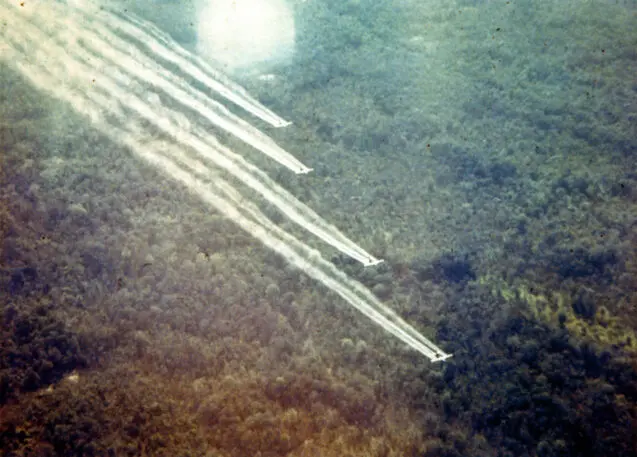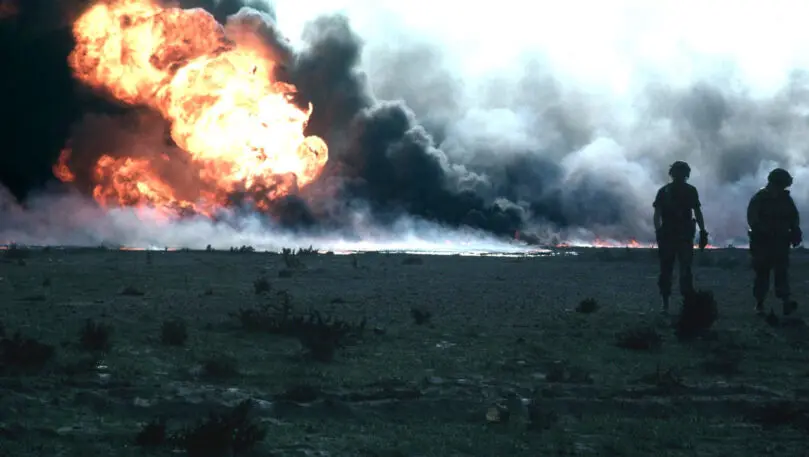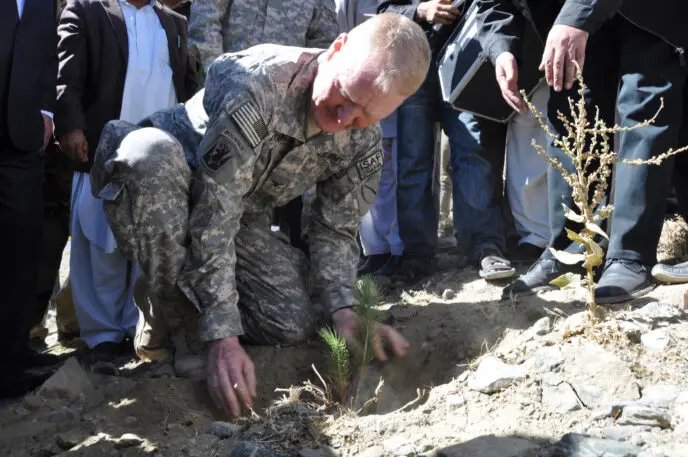Blast craters, denuded landscapes and burning oil wells. When we think of the relation between war and the landscape, we think of such destructive acts and toxic legacies. Through this lens, nature and the landscape are often seen as casualties of war.
Yet there have been cases where nations have used the landscape as a weapon. In one such touchstone case — Operation Ranch Hand — the U.S. military released a defoliant called Agent Orange over the South Vietnam countryside to weaponize the forest during the Vietnam War.

While speaking about the ongoing Russia-Ukraine conflict, U.S. Secretary of State Antony Blinken said,
“Winning a battle is not winning the war. Taking a city does not mean Vladimir Putin’s taking the hearts and minds of the Ukrainian people. On the contrary, he is destined to lose.”
Clearly, the United States military doctrine considers winning “hearts and minds” as a necessary measure to win a war.
As a design critic who has been studying the role of landscapes in warfare, I argue that trees and green spaces can be components of a non-coercive mode of warfare, as they can be used to further community solidarity and diminish the likelihood of insurgency.
Winning hearts and minds
The experience of the United States military in Afghanistan has proven that having a more powerful military force does not guarantee winning a war.
While the Taliban surrendered Kandahar only two months after the launch of Operation Enduring Freedom in 2001, the U.S. military remained in Afghanistan and engaged in violent conflict for the next 20 years, ultimately withdrawing and returning the nation to Taliban control.
Central to the United States’ effort to secure peace was the strategy of winning “hearts and minds,” or making emotional and intellectual appeals to the local population through attraction and persuasion instead of force.

Landscape architects, after all, have always worked to improve public and environmental health. And while hearts and minds are not exactly the same as physical and mental health, it is understood that physical health and well-being are necessary to establish a peaceful society.
Green spaces influence health and mental well-being
American landscape architect Frederick Law Olmsted’s legacy of park building in the United States shows that landscape architects are concerned with public health and social stability. Olmsted was the first professional to use the title of “landscape architect” and is best known for designing New York’s Central Park.
Olmsted’s parks helped sustain Americans’ mental and physical health and social connections during the darkest days of the pandemic. Urban residents enjoyed the greenery in these designed spaces after recognizing that spending time in nature can improve one’s physical health and mental well-being.
Since Olmsted’s time, a growing body of scientific research has concluded that exposure to green space contributes to improved health and well-being. While medical professionals have been prescribing spending time with nature, landscape architects have been working to maximize the positive outcomes of exposure through design.
Landscape design presents itself as a tool capable of influencing the health and well-being and, therefore, the hearts and minds of local populations. Ultimately it can achieve military objectives through the planning and planting of green space.
Weaponizing the landscape
Using the landscape as a weapon is an under-appreciated area of study.
In 1976, the United States, along with 47 other nations, became signatories to the Convention on the Prohibition of Military or Any Other Hostile Use of Environmental Modification Techniques. This treaty prohibits “modification of the natural environment for use as a weapon of war” and “acts of war injurious to the natural environment.”

More recently, the Stop Ecocide Foundation has been working to provide a criminal definition of ecocide that will carry the force of international law, making punishable “severe and either widespread or long-term damage to the environment.”
These efforts are laudable and deserve our support. Yet, the understandable emphasis on damage and destruction decreases the attention given to acts of war, like tree planting efforts, that “improve” an environment.
Understanding the long-term impacts of war
One project undertaken by the U.S. military in Afghanistan saw active troops lead a reforestation effort in the Panjshir region, where they planted 35,000 trees, creating a regional green space.

Despite the U.S. military now having withdrawn from Afghanistan, these planted trees and other green spaces continue to grow and exert influence. Thus, it is not just acts of war injurious to the environment that have wide-reaching and long-term impacts on a population.
As I write from my office on the unceded territory of the Musqueam people, I am more keenly aware that a beautiful landscape can manipulate hearts and minds and become a weapon of war. The continued presence of a colonial landscape, designed and imposed on these lands, is easier to recognize if we ask what this land looked like before and after establishing a settler-colonial society.
We experience green spaces differently depending on their design and our cultural background. We need to think about who designed and built our local green spaces and for what purpose. Ultimately, it matters if the landscape is redesigned and replanted by local populations or by occupying forces.
Fionn Byrne is an Assistant Professor, School of Architecture and Landscape Architecture at the University of British Columbia. This article is republished from The Conversation under a Creative Commons license. Read the original article.
Recognize your brand’s excellence by applying to this year’s Brands That Matter Awards before the early-rate deadline, May 3.
